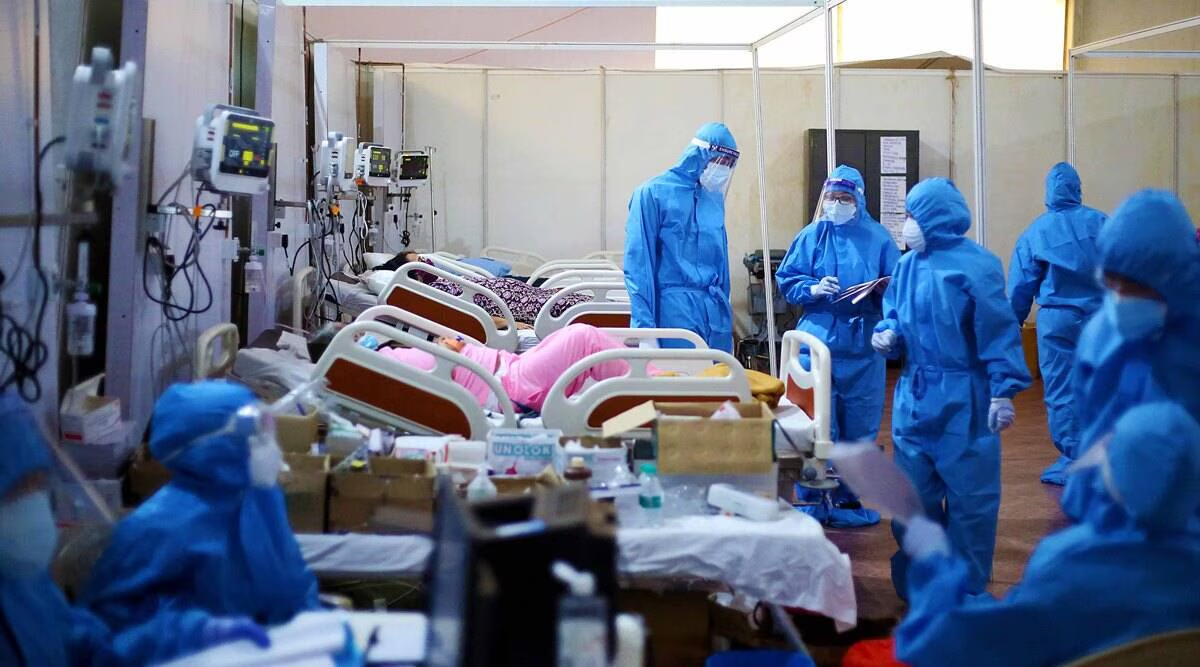New Delhi, 05 June 2025: The COVID-19 pandemic may have begun as a public health crisis focused on physical illness, but its devastating impact on mental health has emerged as one of its most lasting and widespread consequences. As countries around the world fought to control the spread of the virus, lockdowns, social isolation, job losses, grief, and uncertainty triggered a global mental health crisis that affected millions—often silently.
Even as we now begin to emerge from the pandemic, the psychological aftershocks continue to ripple across populations, creating an urgent need to understand, address, and invest in mental well-being.
A Global Mental Health Crisis in the Making
According to the World Health Organization (WHO), the COVID-19 pandemic led to a 25% increase in the prevalence of anxiety and depression worldwide. Mental health services, already underfunded and understaffed in many countries, were further stretched thin, leading to limited access at a time when demand was skyrocketing.
The worst affected groups included:
- Healthcare workers, who bore the emotional and physical brunt of the pandemic
- Young adults and students, who faced academic disruptions and isolation
- Elderly individuals, already vulnerable and often left alone
- People with pre-existing mental illnesses, many of whom experienced worsening symptoms due to a lack of treatment continuity
Isolation and Loneliness: The Hidden Pandemic
Lockdowns and social distancing were critical for curbing the spread of the virus, but they also led to unprecedented levels of social isolation. Humans are social beings, and the sudden disconnection from family, friends, and daily activities had a deep psychological toll.
In many parts of the world, especially urban settings, individuals reported persistent feelings of loneliness, hopelessness, and detachment. Prolonged isolation has now been linked to:
- Increased cases of depression and anxiety disorders
- Higher rates of suicidal ideation and self-harm, especially in teens and young adults
- Deterioration in cognitive function among the elderly
The Economic Fallout and Mental Health
The economic consequences of the pandemic were equally brutal. Millions lost their jobs or faced income cuts, with small businesses collapsing overnight. For countless families, this meant financial insecurity, food shortages, debt, and housing instability—factors that are closely linked with mental health disorders.
In low- and middle-income countries, where social safety nets are weaker, the impact was even more severe. The combination of economic stress and health anxiety created a perfect storm for mental health deterioration across socio-economic strata.
Frontline Workers: Heroes Under Pressure
Healthcare and essential workers were hailed as heroes—and rightly so. But behind their masks, many were battling severe burnout, post-traumatic stress, and emotional exhaustion.
Doctors, nurses, and caregivers witnessed unprecedented levels of suffering and death, often with inadequate protective gear or support. Studies revealed high rates of insomnia, anxiety, depression, and substance use among medical professionals, many of whom continue to struggle even now.
Children and Adolescents: The Youngest Victims
Children may not have been the face of the pandemic, but they were among its most vulnerable victims. With schools shut, playgrounds empty, and social life on pause, children experienced disruption to their development, education, and emotional growth.
Teenagers, in particular, faced increased screen time, reduced physical activity, and disconnection from their support systems. Cases of eating disorders, anxiety, and depressive symptoms rose significantly among youth, with a noticeable uptick in calls to mental health helplines.
One silver lining amid the darkness was the accelerated adoption of teletherapy and digital mental health platforms. As in-person services were restricted, therapists, counselors, and support groups moved online, increasing access for many who had previously struggled to find help.
Mobile apps offering guided meditation, mental health tracking, and online therapy witnessed a surge in downloads. While virtual care can never fully replace human interaction, it became a lifeline for millions during the height of the crisis.
The Stigma Remains: Barriers to Seeking Help
Despite increased awareness, stigma surrounding mental health remains a major barrier, particularly in developing nations. Many individuals are still hesitant to seek professional help due to societal judgment, cultural beliefs, or lack of understanding.
The pandemic has sparked a growing global conversation about mental well-being, but a lot more needs to be done. Mental health must be treated with the same urgency and funding as physical health—especially in post-COVID recovery plans.
What Needs to Be Done: A Global Mental Health Agenda
To address the long-term mental health fallout of the pandemic, both governments and private sectors must:
- Integrate mental health into primary healthcare services
- Increase mental health budgets and train professionals
- Develop school-based mental health programs
- Expand access to community counseling and helplines
- Launch nationwide awareness campaigns to destigmatize mental illness
- Support workplace mental wellness initiatives
While vaccines, masks, and lockdowns helped control the virus, there is no quick fix for mental health recovery. The world is grappling with a silent pandemic of psychological distress that will outlast the virus itself if not addressed with urgency and compassion.
COVID-19 changed life as we knew it. It also exposed the fragility of our mental health systems and the urgent need to prioritize emotional well-being globally. As we rebuild our societies, we must not forget to heal the invisible wounds—because mental health matters now more than ever.







